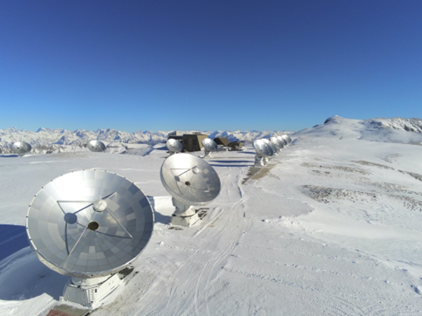NOEMA
NOEMA is the most powerful millimeter-wave interferometer in the northern hemisphere, as Rafael Bachiller, Director of the OAN, explains in this article. Located at Plateau de Bure, in the French Alps, this is a powerful network of radio telescopes which, after years of successive upgrades, has finally reached its full capacity. It has a total of 12 antennas of 15 meters in diameter that can reach separations of up to 1.7 kilometers.
Known by its acronym, NOrthern Extended Millimeter Array, NOEMA is the result of a collaboration between the CNRS (France), Max-Planck-Gesellschaft (MPG, Germany) and the IGN. Built and operated by the Spanish-French-German Instituto de Radioastronomía Milimétrica (IRAM), this large scientific facility has already been the source of important discoveries, and is now ready to make unprecedented observations.
NOEMA is equipped with pioneering technologies. During observations, NOEMA's twelve radio antennas operate in unison, as if they were a single telescope, thanks to a technique known as interferometry. This network of telescopes provides a spatial resolution so high that it would be able to detect a cell phone at a distance of more than 500 kilometers.
Its resolving power and sensitivity allow scientists to collect light that has traveled up to 13 billion years before reaching Earth, thus investigating the complexity of interstellar matter and the constituent elements of the universe. In addition, NOEMA is a member of the Event Horizon Telescope (EHT) consortium, which in 2019 published the first image of a black hole and, in early 2022, that of the black hole at the center of our own galaxy.


